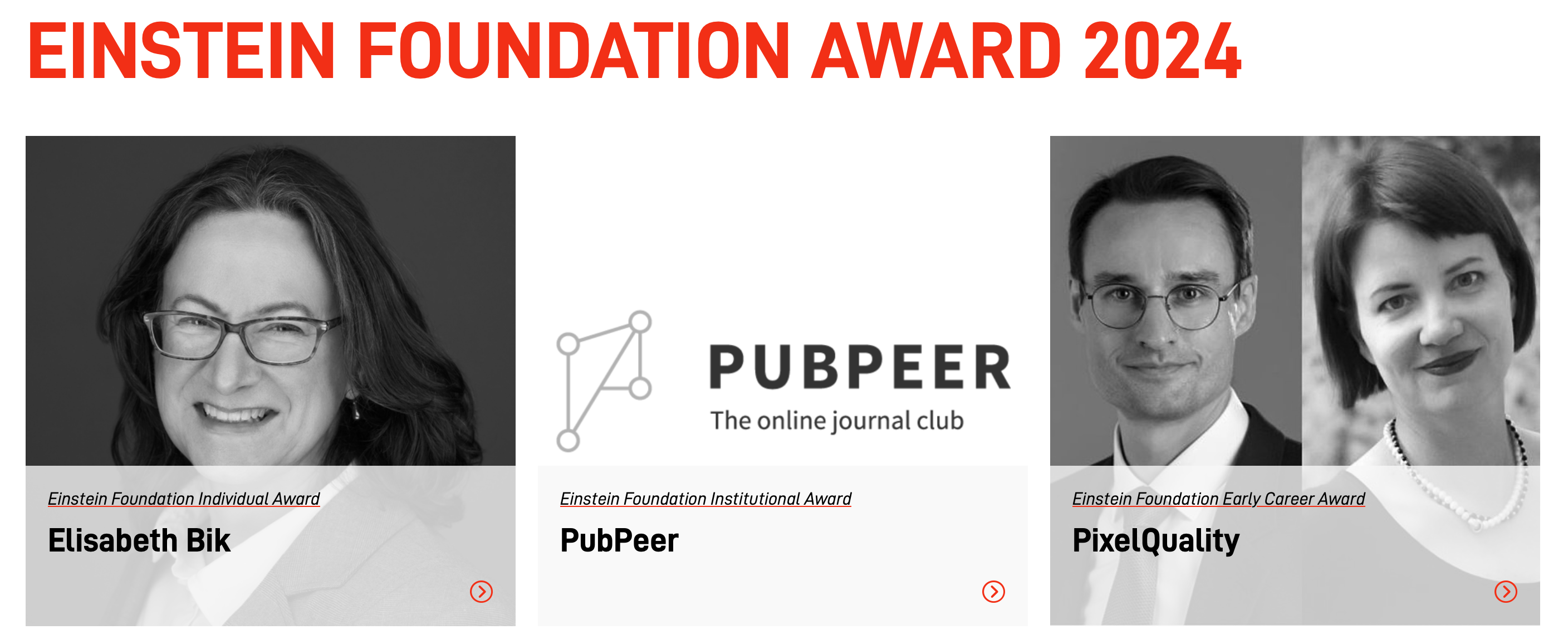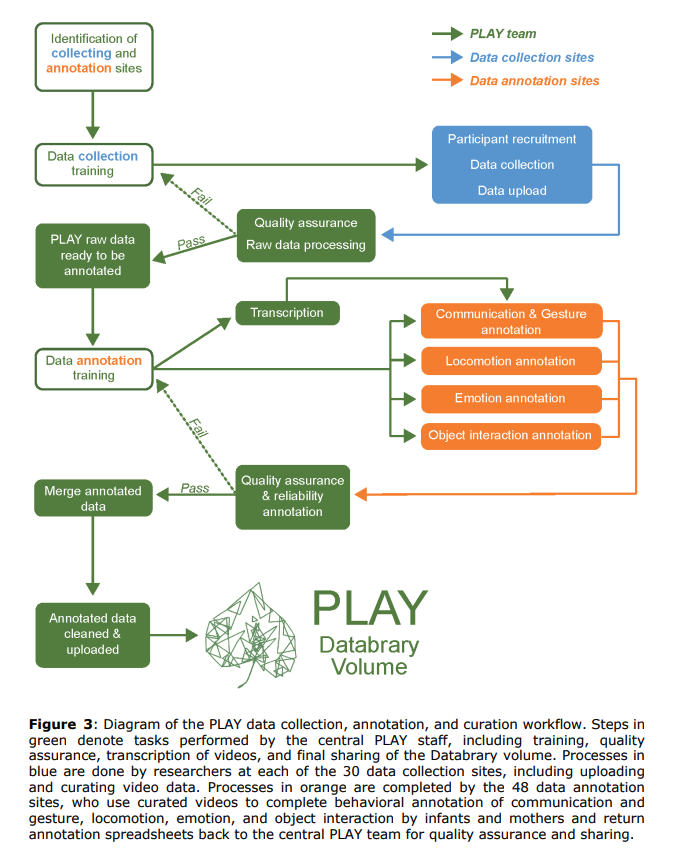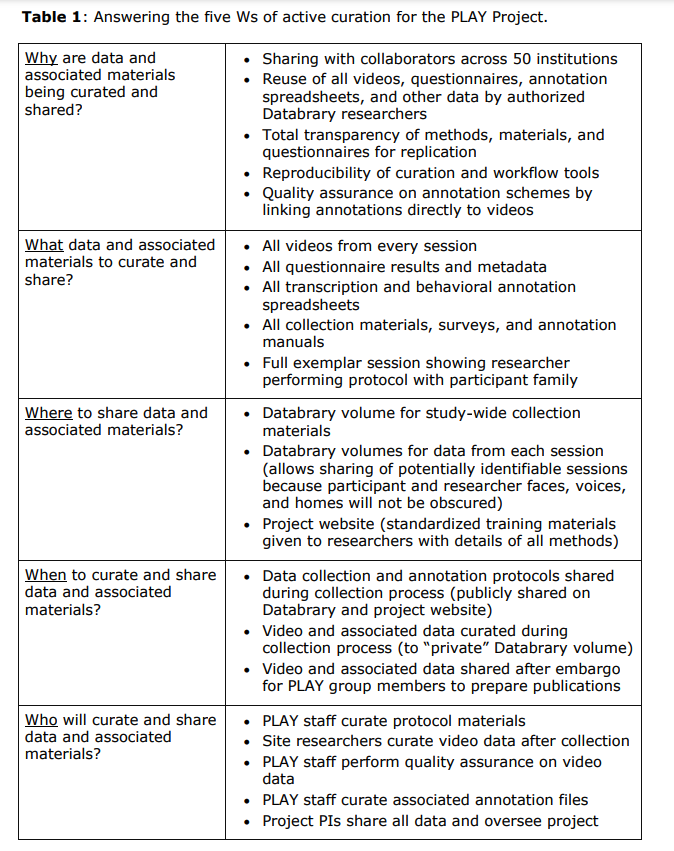Materials, code, & protocol sharing
2024-11-18 Mon
Rick Gilmore
Prelude
Vanderslott, Dattani, Spooner, & Roser (2024)
Vanderslott et al. (2024)
Vanderslott et al. (2024)
Overview
Announcements
- Complete (optional)
- Questionnaire based on Chopik, Bremner, Defever, & Keller (2018). Results are here.
- Friday, November 22
In the news

https://award.einsteinfoundation.de/award-winners-finalists/recipients-2024
Today
Materials, code, & protocol sharing
- Discuss
- Explore
Quest: Sharing materials and protocols
Your mission:
- Visit protocols.io or Journal of Visualized Experiments (JOVE)
- Find a protocol that interests you
- Review it and be ready to report back on the contents, how easy it might be for someone else to follow, etc.
What to share
Materials
- Survey instruments
- Displays
Code
- Stimulus generation (e.g., computer task)
- Data analysis code
- SPSS syntax, R/Python/SAS/MATLAB, etc.
- Computational environments (e.g., containers)
Protocols
- Supplemental methods associate with research articles
- Examples examples:
- PLAY Project
- Especially video, see (Gilmore2017-wd?).
- Survey workflow
- Penn State Open Science Survey (Gilmore, Hillary, Lazar, & Wham, 2023)
- PLAY Project
- https://protocols.io
- Journal of Visualized Experiments (JOVE)
Where to share
Data repositories
Databrary
- https://databrary.org
- Open (not public) sharing, but restricted to authorized researchers
- Specialized for storing and sharing video
- Gilmore & Adolph (2017)
 # When/how to share
# When/how to share
Play & Learning Across a Year (PLAY) Project
- PLAY Project: https://play-project.org
- Survey data via KoBoToolbox: https://PLAY-behaviorome.github.io/KoBoToolbox
Soska et al. (2021)

Figure 2 from Soska et al. (2021)

Figure 1 from Soska et al. (2021)

Table 1 from Soska et al. (2021)
Your turn
- What do students want researchers to share?
- What are the pros and cons of active vs. post hoc data curation?
Next time
Open science tools
- Complete (optional)
- Questionnaire based on Chopik et al. (2018). Results are here.
- Class notes
Resources
References
Chopik, W. J., Bremner, R. H., Defever, A. M., & Keller, V. N. (2018). How (and whether) to teach undergraduates about the replication crisis in psychological science. Teaching of Psychology, 45(2), 158–163. https://doi.org/10.1177/0098628318762900
Crüwell, S., Doorn, J. van, Etz, A., Makel, M. C., Moshontz, H., Niebaum, J. C., … Schulte-Mecklenbeck, M. (2019). Seven easy steps to open science. Zeitschrift für Psychologie, 227(4), 237–248. https://doi.org/10.1027/2151-2604/a000387
FORRT - Framework for Open and Reproducible Research Training. (n.d.). https://forrt.org/. Retrieved from https://forrt.org/
Gilmore, R. O., & Adolph, K. E. (2017). Video can make behavioural research more reproducible. Nature Human Behavior, 1. https://doi.org/10.1038/s41562-017-0128
Gilmore, R. O., Hillary, F., Lazar, N., & Wham, B. (2023). Penn state open science survey. https://penn-state-open-science.github.io/survey-fall-2022/index.html. Retrieved from https://penn-state-open-science.github.io/survey-fall-2022/index.html
Gilroy, S. P., & Kaplan, B. A. (2019). Furthering open science in behavior analysis: An introduction and tutorial for using GitHub in research. Perspectives on Behavior Science, 42(3), 565–581. https://doi.org/10.1007/s40614-019-00202-5
Kathawalla, U.-K., Silverstein, P., & Syed, M. (2021). Easing into open science: A guide for graduate students and their advisors. Collabra. Psychology, 7(1). https://doi.org/10.1525/collabra.18684
Soska, K. C., Xu, M., Gonzalez, S. L., Herzberg, O., Tamis-LeMonda, C. S., Gilmore, R. O., & Adolph, K. E. (2021). (Hyper)active data curation: A video case study from behavioral science. Journal of Escience Librarianship, 10(3). https://doi.org/10.7191/jeslib.2021.1208
Vanderslott, S., Dattani, S., Spooner, F., & Roser, M. (2024). Vaccination. Our World in Data. Retrieved from https://ourworldindata.org/vaccination
